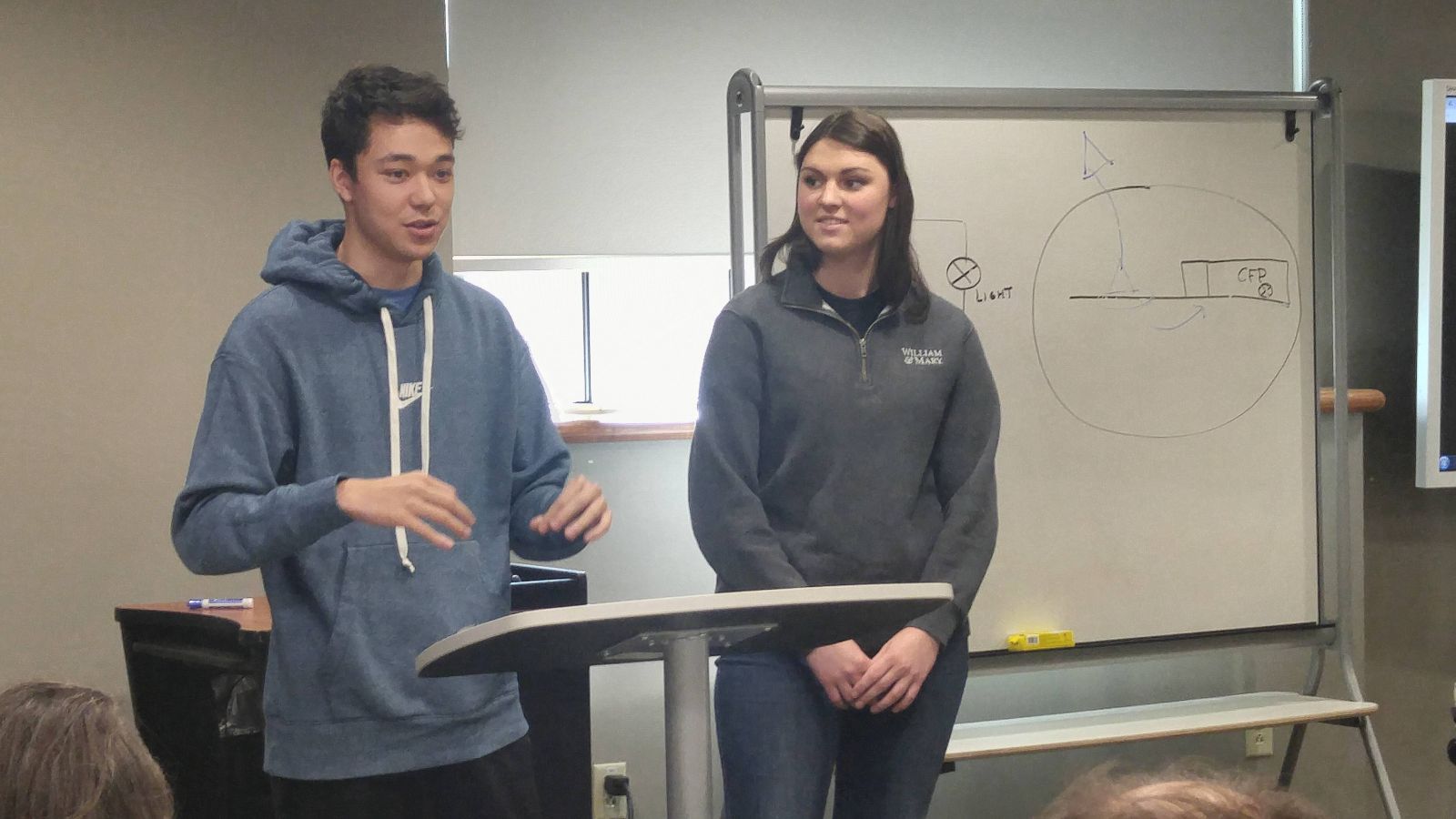By Jennifer Hoyt
Over a brown-bag lunch and workshop setting, William & Mary’s e-Learning Initiatives tackled a topic that frequently creates challenges for both faculty and students of K-12 and higher education: group work. The 20-plus attendees met in Swem Library’s Ford Classroom on January 23 to share their experiences of applying the popular method of teaching and learning, while considering how to help students balance interpersonal reliance with academic growth. They left with a detailed perspective from two individuals knee-deep in the good and bad of teamwork.
“I think that it's sometimes good to hear about the challenges the students are experiencing because, as a professor, unless things get really bad, a lot of times all you see is the initial five-second divvying up into groups and then the ultimate product,” shared W&M senior Jessica Laury. “You don't always see all the work that went into the collaboration of that project.”

Laury teamed up with Ethan Jones, also a W&M senior, as they offered their points of view on what it takes to successfully produce academic work with their peers, and as Jones stated directly, discipline and dedication must drive the projects in such a digitally-structured learning environment. “This is what the idea of group work looks like, when people are really doing it for the learning and doing it in terms of objectives.”
Faculty members shared their own opinions on assigning group work, specifically on designing assignments that actually warrant collaboration and how they determine the amount of participation required by everyone involved, instructors included. Those attending the workshop raised concerns over structuring productive teams, the opportunity for diverse perspectives, the use of time management, and the application of knowledge once teams disband.
The two seniors presented their points from an extreme example of group work, one that extends to an international level of competition and scholarship. Currently, Jones and Laury work with other William & Mary students as they participate in a year-long synthetic biology project under what’s known as the International Genetically Engineered Machine or iGEM. Going up against other groups from Harvard, Princeton, and MIT, among others, the two take the practice of teamwork to new levels, yet they remain focused on the basics of communication, timelines, objectives, and quality.
“There are always goals with group work, and then there is the actual outcome with group work,” Laury explained. As for Jones, he believes their discussion at the e-Learning workshop will benefit faculty as they plan future group work assignments. “You can sort of get what students think from evaluations or the general sentiments, but different voices will always be louder than others.”
Once the workshop wrapped up, faculty offered their appreciation to Laury and Jones for voicing their experience of teamwork in a realistic description of trial and error. Professor Gene Roche shared, “I found it to be valuable, and I’ve been doing group work for 30 years.” Moreover, Angélica Serna Jeri, Assistant Professor of Hispanic Studies, believes the focus on student collaboration crosses over to all fields of academic study when stating, “I think it was very useful for me because I come from the humanities, and I always want to incorporate new ways to work in groups.”

